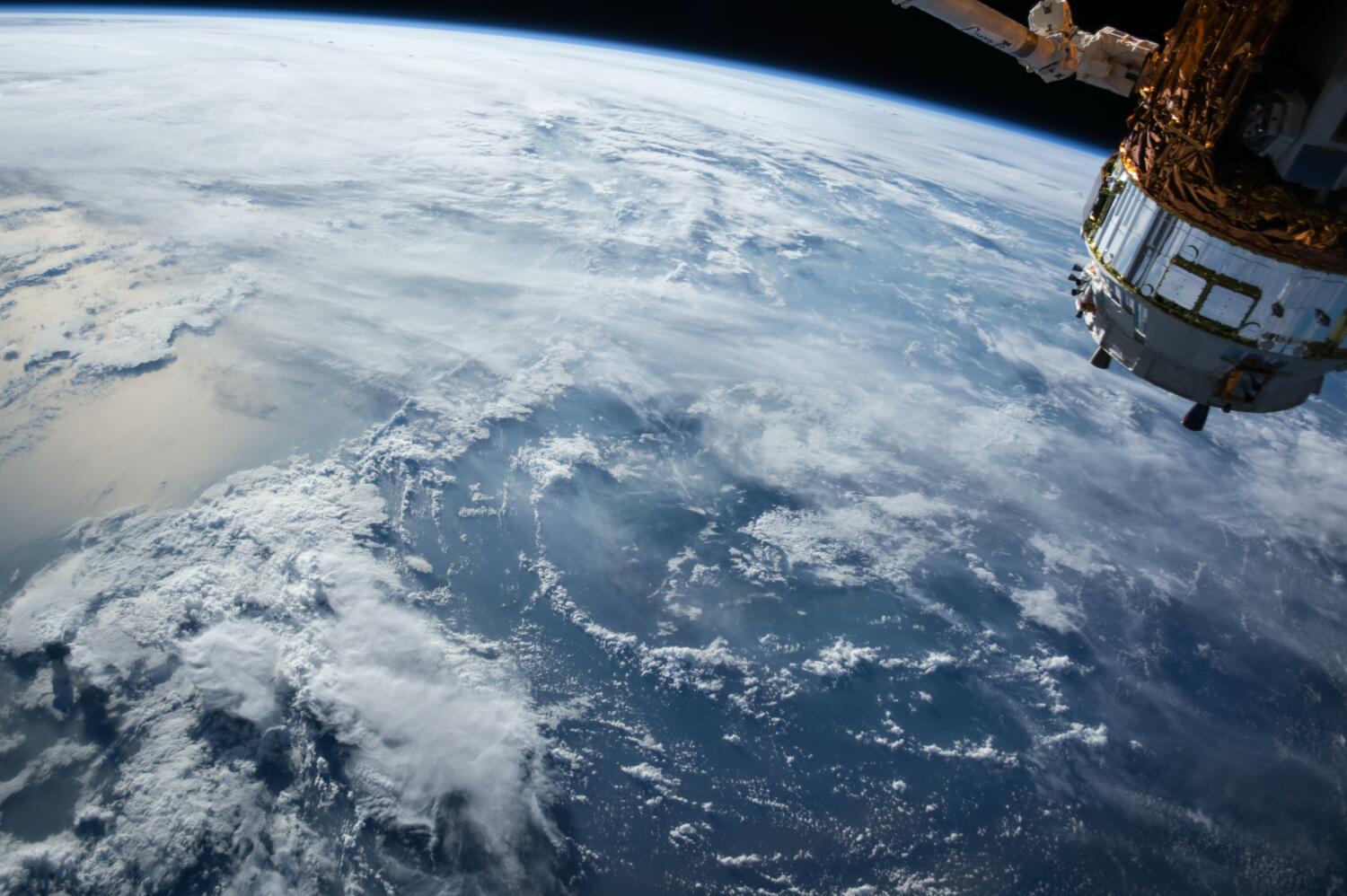Is Earth a Privileged Planet?
Author: Kaleb Johnson | Student, Living Education – Charlotte, 2022-23
Estimated reading time: 5 min.
Evangelist and Tomorrow’s World presenter Mr. Richard Ames gave the Living Education students a forum presentation on our privileged planet.
Mr. Ames presented a powerful proof of God’s existence: the improbability of the planet earth. He directed the students to a documentary and book with the title The Privileged Planet. Guillermo Gonzalez and Jay Richards authored the book and starred in the documentary, and they challenge the Copernican Principle in a fascinating way.
Mr. Ames’ Opening Comments
Mr. Ames introduced the documentary by expounding on a certain worldview that influences much of modern society and thinking: the Earth is just a tiny speck floating in a vast universe, and the fact that Earth is perfectly suited for life is only a cosmic quirk, one that no doubt has happened elsewhere. Mr. Ames appealed to the book Pale Blue Dot, in which Carl Sagan highlights the insignificance of the tiny Earth in a massive universe. When one looks only at size comparisons, the Earth is insignificant. However, there is more to consider.
Mr. Ames pointed out the vast improbability that the universe exists in a stable expansion, referring to Stephen Hawking’s The Nature of Space and Time. He also referenced solar eclipses. The sun and moon align precisely, an improbability that has greatly helped mankind—but more on that later. Ultimately, our planet is a pale blue dot, but it is a very special pale blue dot. After this introduction, Mr. Ames began the documentary.
What is the Copernican Principle?
The documentary began with Copernicus, the Polish mathematician who derived the Heliocentric model—which presents the planets as orbiting the sun—rejecting the ancient Greek perspective of the earth being stationary. Fast forward to the beginning of the twentieth century: Astronomer Edwin Hubble peered through the Hooker Telescope (the most powerful of the time) and discovered that many of the nebulae thought to be dust clouds were in fact galaxies just as large as our own. The universe seemed to grow overnight. Now that the universe was known to be incomprehensibly large, contemporary philosophy and astronomy merged to form the Copernican Principle.
Copernican Principle: humans, on the Earth or in the Solar System, are not privileged observers of the universe.
Peacock, John A. (1998). Cosmological Physics
Life in the Vast Universe
The Copernican Principle dictates that life must exist elsewhere. If not, Earth is unique and occupies a privileged spot. Thus the search for extraterrestrial life began, and it continues to this day. This search is conducted by a reactive method—radio telescopes analyzing radio waves for signs of intelligent life—and a proactive method of finding and examining planets that could hold life.
Given that the laws near earth are proven to be in effect throughout the universe, the best model for a planet that sustains life is Earth. When researchers began to compile a thorough list of the factors that make Earth suitable for life, a different picture began to emerge. While the universe is massive, the Earth is quite unusual. It possesses an unusual atmosphere, an odd core—hot enough to have molten metals move and create a magnetic field—that protects that atmosphere, water and other elements, a large moon that regulates tides, a certain distance from the sun, and many more factors. Even its position in the solar system is unique, as gas giants protect Earth from rogue celestial bodies. Astronomy proved that the universe is big; astrobiology proved that the factors for a life-bearing planet are bigger. The notion that the universe is teeming with life is not as alluring as it once was.
An Unlikely Connection
This documentary honed in on a specific concept. Is humanity a privileged observer of the universe simply because we can observe the universe at all? This question strikes at the heart of the Copernican Principle. The authors of The Privileged Planet saw a correlation between factors for life and factors that enable scientific observation. For instance, the atmospheric composition of the Earth is critical for life, yet it is also transparent, allowing us to observe the sun, moon, stars, and wider universe. Also, a large moon and a certain distance from the sun are necessary for a planet with life. This creates a likelihood for solar eclipses, and these are perfect opportunities to view the sun. In fact, solar eclipses in the 19th led to a number of discoveries that greatly aided humanity. In the 20th century, the fact that light is bent by gravity was proven during a solar eclipse.
It is another odd “coincidence” of the universe that the conditions for life are exactly the conditions for scientific discovery. In essence, intelligent life exists in a place with characteristics only beneficial to intelligent life. This, when coupled with the many other improbabilities of the universe’s nature, points to purpose.
The Earth: Center of the Universe
The documentary ended with that correlation between life and discovery, but Mr. Ames made a fascinating remark before he began the documentary. There is no way of knowing whether the Earth is the center of the universe now, but there is a time when it will be, because God will dwell on Earth.
“Behold, the tabernacle of God is with men, and He will dwell with them, and they shall be His people. God Himself will be with them and be their God.”
NKJV Revelation 21:3
Ours is a pale blue dot with a great big future.

Kaleb Johnson is a student in the Living Education-Charlotte Program. He graduated with a degree in Chemical Engineering from the University of Alabama in Huntsville in the spring of 2022. In addition, Kaleb enjoys writing, video-making, trying new activities (anything and everything), playing chess, and debating (it’s not arguing!) with people. He currently works in the Living Education department producing written content & videos and helping with a variety of other projects.









